What Is The Best Baseball Bat For Contact Hitters?
Choosing the best baseball bat for contact hitters is crucial. These players aim for consistent contact to get on base, unlike power hitters who focus on hitting far. The right bat is key to improving their performance, boosting their batting average and on-base percentage.
Exploring the right bat can make a big difference. It’s important to look at timing, precision, and swing mechanics. For more information on how to pick the right bat, check out this resource on contact hitter analysis1.
Key Takeaways
- Contact hitters prioritize consistency over power when choosing a bat.
- A balanced swing weight is essential for effective contact hitting.
- Key brands include Louisville Slugger, DeMarini, and Easton in 2023.
- Composite bats offer lighter swing weights, enhancing bat speed.
- Testing bats with technology like Hittrax can provide substantial insights into performance.
Understanding Contact Hitters in Baseball
In baseball, contact hitters aim to hit the ball first and foremost. They focus on making solid contact over hitting home runs. This strategy is key for a strong offense. Players like Ichiro Suzuki are great examples, often leading the league in reaching base safely without striking out2.
They hit the ball all over the field, making them crucial to any team. Tony Gwynn is another example, known for rarely striking out. He hit the ball well, putting it in play often2. Rod Carew also stood out, always hitting well and rarely striking out for many years2.
Today, players like Juan Soto and Michael Brantley show how important contact hitting is. They hit for both power and precision, key for modern teams3.
Even with more strikeouts now, contact hitters still do well. The Cleveland Guardians, for example, hit the ball often, making their team strong3.
Characteristics of a Contact Hitter
Understanding what makes a contact hitter stand out in baseball is key. They have skills that help them hit consistently. These players focus on hitting the ball well, not just trying to hit it far.
Defining the Contact Hitter
Contact hitters are great at hitting the ball every time. This skill is crucial for their success. For example, hitting .333 means they get a hit in one out of every three chances, a top-level performance4.
They use strategy and precise mechanics to help their team. In high-pressure situations, their accuracy is crucial.
Importance of Consistency
Being consistent is key for hitters. Contact hitters often get on base more often, thanks to fewer strikeouts. They pick the right pitches and time their swings well, making them valuable in different game situations5.
This focus on consistency helps them perform well when it counts. It shows their skills in big moments.
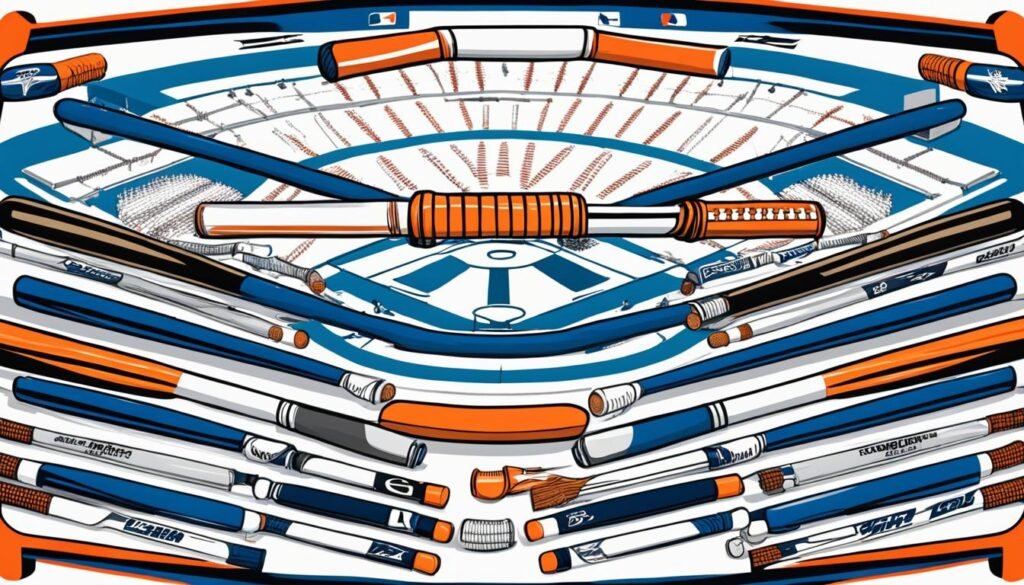
| Characteristic | Details |
|---|---|
| Contact Ability | High ability to make contact with the ball, emphasizing hitting rather than power. |
| Batting Average | Aim for a batting average around .333 or higher, indicating success at the plate. |
| Pitch Selection | Skillfully choose pitches to hit, reducing strikeouts and increasing on-base potential. |
| Adaptability | Flexibility in approach to deal with various pitcher styles and game pressures. |
Players who excel in these areas are very valuable. Knowing what makes a contact hitter special can help others improve their hitting.
For more tips on hitting well, check out this resource546.
Why Choosing the Right Bat Matters
Choosing the right bat is key to boosting a player’s performance at the plate. The right bat can improve a player’s batting average and on-base percentage. It’s important to know how different bats affect these stats for better results on the field.
Impact on Batting Average
A good bat can make a player’s swing better, leading to more solid hits. Players with high batting averages often use lighter bats for faster swings. These bats help them hit the ball more consistently, which boosts their batting average.
The right bat size is crucial for a player’s swing. It lets contact hitters perform their best at the plate7.
Role of On-Base Percentage
On-base percentage is also vital for a player’s success. The right bat can make a player feel more confident and in sync, leading to better plate discipline. It helps contact hitters make smart choices and get more walks, raising their on-base percentage.
Studies show that the weight and length of a bat influence a player’s approach. Finding the right fit is key for anyone wanting to boost their on-base percentage8.
Key Features of Bats for Contact Hitters
Choosing the right bat is key for contact hitters. It greatly affects your performance at the plate. Knowing what makes a bat good can help you pick the best one.
Balanced Swing Weight
A balanced swing weight is a must for contact hitters. It lets you swing faster and control the bat better. This balance means you hit the ball consistently, which is key for a high batting average9.
Balanced bats spread their weight evenly from the handle to the barrel. This makes your swing faster and more precise. The Easton Mav1 series is a top pick for its balanced swing and traditional design10.
Barrel Control and Sweet Spot
Good barrel control is crucial for contact hitters. A bat that hits the sweet spot well means better contact with the ball. This leads to better results at the plate.
The Victus Vandal Lev3 is great for its balanced design. It’s perfect for hitters of all ages9. Better barrel control means you can swing consistently well.
Handle Thickness for Grip
Handle thickness affects how secure your grip is. A thicker handle feels solid, while a thinner one is easier to move. Finding the right handle makes you feel confident at the plate.
Brands like Easton design their handles for a good grip. This lets you control the bat without losing your swing mechanics10.

Best Bat Materials for Contact Hitters
Choosing the right bat material is key for top performance as a contact hitter. The best materials affect not just the *baseball bat durability* but also how the bat feels and controls during swings.
Aluminum bats are light, making swings faster. This means the ball goes faster off the bat than with wood. They also have a bigger sweet spot, making them great for contact hitters. This helps players hit more consistently, raising their batting averages11.
Composite bats focus on durability. Even though they’re pricier, they send the ball flying faster. Contact hitters like these bats for their flexibility and balance11.
Aluminum and composite bats show why knowing about different materials matters. When picking the best for contact hitters, look at their special benefits.
| Material | Advantages | Disadvantages |
|---|---|---|
| Aluminum |
|
|
| Composite |
|
|
Trying out different materials is a must. I suggest testing various contact hitter bats to find what feels best for you. For more info, check out the guidelines on choosing the right size and weight of a baseball.
Comparison of One-Piece and Two-Piece Bats
Choosing the right bat can be tough, especially for contact hitters. They need to find a bat that fits their style. One-piece and two-piece bats have different features for different hitting styles.
Advantages of One-Piece Bats
Strong players often pick one-piece bats for their power. They like how these bats transfer energy well because they’re made of one stiff material. This means less energy is lost when hitting, giving more power. The Marucci Cat 7 and Louisville Slugger Omaha 517 are great examples of this.
These bats also feel solid, which helps with control during games12.
Benefits of Two-Piece Bats
Two-piece bats are good for contact hitters. They help the bat swing faster and control better. This is great for players who swing at average speeds or slower. The Easton MAKO Beast and DeMarini CF Zen show how well two-piece bats work.
They’re also better at reducing vibrations, making hitting more comfortable13.

There’s no clear winner between one-piece and two-piece bats. I suggest trying both to see what works best for you. Websites like JustBats.com make it easy to find the right bat with many options.
| Feature | One-Piece Bats | Two-Piece Bats |
|---|---|---|
| Power Transfer | Efficient with minimal energy loss | Flexible, generating a whip effect |
| Best For | Power hitters with above-average bat speed | Contact hitters with average or below-average bat speed |
| Common Models | Marucci Cat 7, Louisville Slugger Omaha 517 | Easton MAKO Beast, DeMarini CF Zen |
| Comfort and Control | Solid feel and enhanced control | Improved vibration dampening and comfort |
Top BBCOR Bats for Contact Hitters
Finding the right bat is key for contact hitters to boost their game. I’ll look at the 2022 DeMarini Voodoo One and the Easton Alpha ALX. These bats are great for players who want to improve their hitting.
2022 DeMarini Voodoo One BBCOR
The 2022 DeMarini Voodoo One BBCOR Bat is known for its one-piece aluminum alloy build. This makes it balanced and light, perfect for hitting the ball well. Players love it for its performance, making it a top choice for contact hitters.
2022 Easton Alpha ALX BBCOR
The 2022 Easton Alpha ALX BBCOR Bat is also great for contact hitters. It has a two-piece design for power and control. Players like it for its durability and grip, which helps them perform better on the field.
Choosing the right BBCOR bat can be tough, but the DeMarini Voodoo One and Easton Alpha ALX are top picks. It’s important to think about grip and size too. Using batting gloves can also improve your game by giving you a better grip and comfort.
Improving grip and control withthe right batting gear is key to better hitting skills141516.
Contact Hitter Strategies to Improve Performance
As a contact hitter, developing effective strategies is key to doing better at the plate. I focus on keeping a balanced stance and improving my timing. Knowing how to recognize pitches helps me use hitter’s counts to swing for barrels. These are balls hit over 98mph with angles that boost my batting average and slugging percentage17.
Trying to hit the ball at least 98mph with an 8-37° angle can really help. In two-strike counts, I aim for over 60% of my at-bats to end well, like with balls in play or walks17. This strategy, along with aiming for line drives at about 12°, makes hitting more effective.
Knowing how fast my bat moves helps me hit better. For example, MLB players average about 74.5 mph, with stars like Giancarlo Stanton hitting up to 81.3 mph18. Improving my smash factor, which shows the quality of my hits, helps me swing better.

The mental side of hitting is also crucial. Ken Ravizza suggests focusing on what I can control, like my thoughts and routines, to hit better19. I make sure to warm up right with exercises that get my muscles ready for hitting.
Effective Drills for Contact Hitters
As a contact hitter, I’ve learned that hitting drills are key for better performance. They help build muscle memory and improve skills, making me hit more often in games. About 45% of these drills focus on swing mechanics, muscle engagement, and bat speed. This includes 25% that boost bat speed and power20.
These drills let young players try different techniques to find what works best for them. Getting good at hitting isn’t hard, starting with simple drills like bunting. Knowing about timing and different hitting styles is crucial for mastering swings. Tips on stance, weight, and hand position can greatly help in practice21.
Many drills use props or fun elements to keep training interesting. For example, 20% use frisbees and basketballs, and 5 drills make practice fun20. I focus on balance and control in my swings, knowing 15% of drills focus on these skills for a solid hit.
To show you some effective drills for contact hitters, I’ve made a table with key drills and their benefits:
| Drill Name | Focus Area | Benefits |
|---|---|---|
| Torque Drill | Creating torque | Enhances swing direction and power |
| Forced Oppo | Vertical swing plane | Improves oppo power; manages inside pitches |
| Fall Forward / Pull Back | Loading sequence | Aligns with elite player techniques |
| Circle the Foot Drill | Explosive swing energy | Maximizes stretch for a powerful swing |
| Preset Tension / Torque Drill | Creating tension | Linked to successful hitters’ approach |
Remember to sprint out of the box after hitting to get feedback on the ball and make better game decisions. Using a variety of effective drills for contact hitters helps me improve and become a better player. Learning about wooden bats and their benefits is also key for hitting skills here20.
Player Development and Contact Hitting Techniques
In my journey to improve my skills as a contact hitter, I’ve learned how important player development is. Contact hitting techniques are key for success at the plate. Focusing on improving bat speed and plate discipline is crucial. These skills help me make consistent contact with the ball.
Importance of Bat Speed
Bat speed is key for solid ball contact. Studies show that advanced hitting techniques help college-level players a lot22. Practicing in batting cages builds muscle memory, so I can hit fast in games too22. Stretching regularly also makes me more flexible and less likely to get hurt23. This leads to faster swings and keeps me competitive.
Improving Plate Discipline
Being disciplined at the plate is just as important for baseball success. Focusing on the contact point improves timing and accuracy22. Starting with tee work helps improve swing mechanics before moving to live pitches23. Varying practice with different pitches trains me to react quickly and hit consistently23. Recording my practices gives me feedback to keep getting better, helping me aim for batting excellence.

Contact Hitter Statistics and Analysis
Exploring contact hitter statistics shows us how important certain metrics are. These include batting average, on-base percentage, and high contact rates. They tell us how well a player does on the field.
Measuring Success Through Stats
Batting average is a key stat that shows a player’s hits per at-bat. On-base percentage looks at how often a player gets on base safely. This includes hits, walks, and errors24. Seeing how things like sac bunts or groundouts affect a player’s performance is interesting.
New metrics like xBA give a deeper look at a batter’s contact skills. They aim to fix luck in hitting results25. This new analytics world helps us see how contact hitters change the game.
Understanding High Contact Rates
High contact rates boost a player’s batting average and effectiveness25. Strikeout rates also affect batting average, showing why contact hitters aim to avoid swinging and missing25. Knowing these stats helps hitters plan their training and strategies better.
Using stats like OPS or GIDP gives a full picture of a player’s skills24.
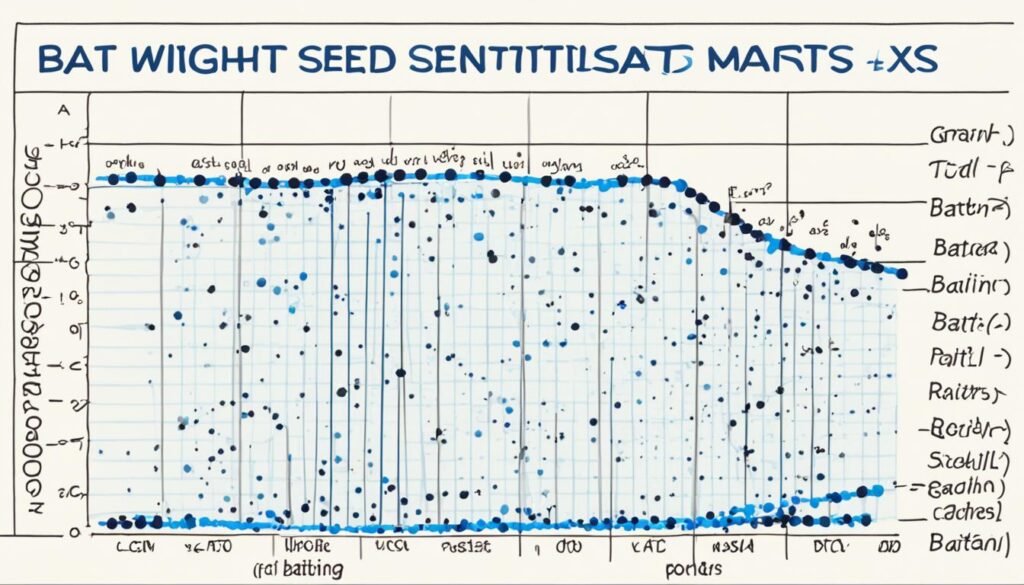
Top Contact Hitters in MLB History
The legacy of the top contact hitters in MLB history is truly impressive. Stars like Wade Boggs ended their careers with 3,010 hits and a remarkable .328 batting average26. Rod Carew, another hitting legend, got over 3,000 hits and kept a .328 average, winning seven batting titles26
Stan Musial is a standout with 3,630 hits and a .331 batting average, hitting 475 home runs26. Tony Gwynn wowed the world with 3,141 hits and a .338 average, earning eight batting titles26. Pete Rose, the all-time hits leader, has a career .303 average and is famous for his record singles26. Lastly, Ty Cobb is a legend with 4,189 hits at an amazing .366 average and 12 batting titles26.
Modern stars like Ichiro Suzuki also made their mark, finishing with over 3,000 hits at a .311 average26. Ichiro was also a leader in avoiding strikeouts2. Gwynn was known for his rare strikeouts, averaging one every 21 at-bats2. These famous hitters show the value of consistent batting in MLB history, proving their skill and hard work.
How to Select the Best Bat for Your Hitting Style
Finding the right bat is key to doing well at the plate. With so many options, knowing what I prefer is crucial. The right bat supports my hitting style and boosts my confidence in games.
Personal Preference and Comfort
Choosing the best bat is all about what feels right for me. I must think about the bat’s feel, weight, and length. A good grip means I can swing with control. Different bats suit different players, based on their style. For example, two-piece bats are great for balance, while one-piece bats are stronger.
The materials used, like maple, birch, or alloy, also matter. They affect how happy I am with the bat2728.
Testing Bats Before Purchase
Testing bats before buying is a must. I should swing different bats to see how they feel. Some bats, like lighter ones, make swinging faster and improve my hitting.
The length-to-weight ratio of a bat changes how it swings. BBCOR bats have a specific ratio, while USSSA bats vary2829. Trying out different materials, like ash or composite, helps me find the best one for games. Brands like Rawlings, Easton, and DeMarini offer great options for testing.
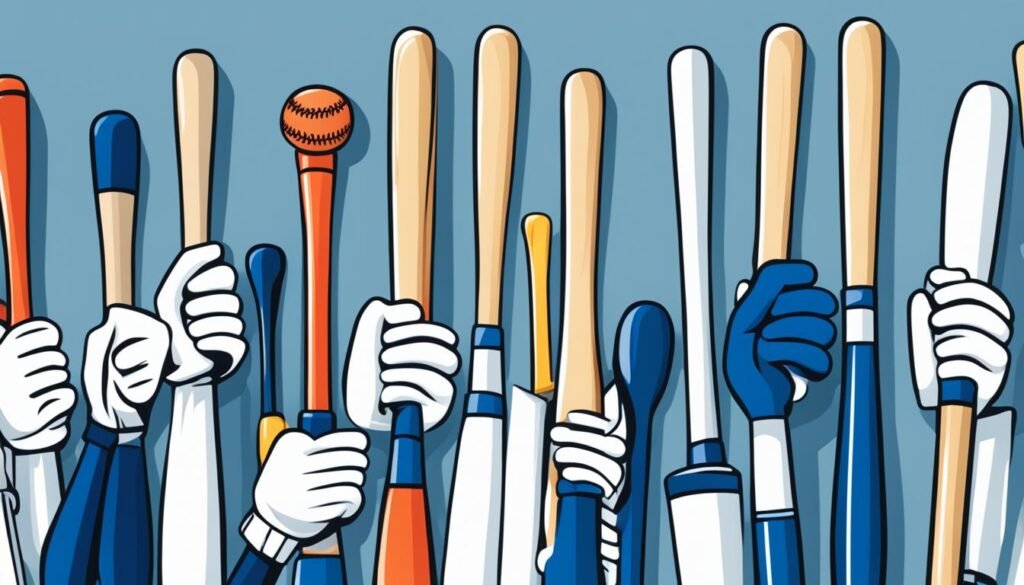
Common Misconceptions About Contact Hitters
Many people misunderstand contact hitters, thinking they lack power. This belief overlooks the skill of hitting for average with precision and consistency. Contact hitters aim to hit the ball well through good mechanics and strategy.
Some believe the swing’s mechanics are all about “squishing the bug,” which can actually stop hip rotation early30. Hands don’t start the swing but move last30. This wrong idea can lead to bad techniques, ignoring how the whole body moves with the swing.
Young players often train in environments that add to these wrong ideas. Coaches tell them to swing “level” but great hitters like Albert Pujols don’t do that31. These myths can hold back a player’s growth and success in higher levels, as seen with Andres Torres31.

By clearing up these wrong ideas, young hitters can improve their skills. They learn the true value of hitting for average and the power in their swings. This new understanding helps them succeed better.
Tips for Aspiring Contact Hitters
As I work on my baseball skills, I focus on key areas to get better. I aim to hit for singles and be consistent at the plate. These skills are crucial for doing well in the game.
Hitting for Singles
My goal is to hit for singles to be more consistent. This means I aim for precision over power. I look for gaps in the field to increase my chances of getting on base.
A good routine helps me stay focused and improve my hitting. This approach has made a big difference in my game.
Emphasizing Consistent Swings
Being consistent is key for any contact hitter. I work on a compact swing for better control and accuracy. Regular practice builds muscle memory for reliable swings.
Drills focused on timing and rhythm help me repeat good habits. Balancing and following through boosts my confidence and game performance.

In conclusion, improving as a contact hitter takes hard work. Focusing on hitting for singles and being consistent helps a lot. With the right tips, I can hit better and reach my baseball goals323334.
Conclusion
My journey in contact hitting has shown me that choosing the right bat is more than just about what feels good. It’s about knowing the game and improving your skills. Remember, getting better at hitting means having the right gear, practicing often, and knowing your strengths and weaknesses.
Statistics show that power, making contact, and hitting hard are key to hitting well. In fact, 66% of the difference in batting performance comes from skills like hitting and discipline35. Also, feeling confident and staying focused in the game can really help you perform better36.
By applying these insights to my training, I can greatly improve my hitting skills. My dedication to getting better and choosing the right bat will help me reach my goals.
FAQ
What is a contact hitter in baseball?
How do I choose the best bat for a contact hitter?
What are some effective strategies for improving contact hitting?
What materials are best for contact hitter bats?
What is the difference between one-piece and two-piece bats for contact hitters?
How do statistics reflect the success of contact hitters?
What drills can help me improve my contact hitting skills?
Who are some of the top contact hitters in MLB history?
How does a contact hitter determine the right bat for their hitting style?
What are common misconceptions about contact hitters?
Source Links
- https://betterbaseball.com/blog/the-best-bbcor-bats-for-contact-hitters
- https://en.wikipedia.org/wiki/Contact_hitter
- https://www.nytimes.com/athletic/5417342/2024/04/16/mlb-contact-hitters-adding-power/
- https://annex.exploratorium.edu/baseball/features/how-far-can-you-hit-one.html
- https://forums.ootpdevelopments.com/showthread.php?t=299660
- https://community.hsbaseballweb.com/topic/coaching-contact-vs-power-hitters
- https://thehittingvault.com/how-to-pick-the-right-baseball-bat/
- https://phoenixbats.com/blog/where-do-i-start-choosing-the-right-bat/
- https://www.headbangersports.com/blogs/news/contact-hitters-vs-power-hitters-what-bat-should-you-be-using
- https://smashitsports.com/blogs/smash-it-sports-blog/choosing-the-perfect-baseball-bat-contact-hitter-vs-power-hitter
- https://www.baseballmonkey.com/learn/deciding-which-type-of-bat-is-best
- https://blog.justbats.com/blog/index.php/3166/one-piece-vs-two-piece-bats
- https://www.justbats.com/videos/video/one-piece-vs-two-piece-bats—justbats-com-buying-guide/49/
- https://baseballbatbros.com/pages/bbcorrankings
- https://www.justbats.com/blog/post/best-bbcor-baseball-bats/
- https://www.headbangersports.com/blogs/news/how-to-pick-a-bbcor-baseball-bat-for-2023
- https://www.drivelinebaseball.com/2022/08/developing-a-baseball-hitting-approach/?srsltid=AfmBOorbPQ23lkSvXgZBYwkvQWMbeykhIfcD47od_FvP0ktJRXVsT_6q
- https://www.drivelinebaseball.com/2021/10/how-to-be-a-complete-hitter-three-key-areas-to-improve/?srsltid=AfmBOop9PkWFoZsTNeRtICiOJX3jYxx1hKeRNVvBMzF0r7zlW_RTUbrO
- https://www.patrickjonesbaseball.com/blog/nomechanics
- https://yougoprobaseball.com/best-baseball-hitting-drills/
- https://www.teamsnap.com/community/skills-drills/baseball/hitting/126-how-to-hit-for-contact-and-power
- https://keepplayingbaseball.org/hit-the-cages-the-box-contact-point-2/
- https://www.sequencebat.com/sequencebat-best-hitting-tool-blog/blog-post-title-one-cxnfr
- https://brucebolt.us/blogs/news/baseball-hitting-statistics?srsltid=AfmBOooU2ScZC8JjhYrIMnmCh-IUpdamZWqYoiA70epyyBSbL_5DEXNj
- https://baseball-analytica.com/posts/2023-06-30/batting-average-contact-metric
- https://franchisesports.co.uk/best-contact-hitters-of-all-time/
- https://www.whatproswear.com/baseball/news/the-best-wood-bat-for-your-hitting-style/
- https://www.justbats.com/bat-resource-guide/
- https://sportsexcellence.com/blogs/game-assist/how-to-choose-the-perfect-baseball-bat-for-your-playstyle?srsltid=AfmBOoqLDsZI9pIe70SOoNz8uC0GlEDCRBSerXa2Cr0gM0a3AyiUsLBo
- https://clients.chrisoleary.com/Hitting/Webbooks/Hitting-Mechanics-101/First-Do-No-Harm/Misconceptions-About-Hitting
- https://www.chrisoleary.com/hitting/myths-misconceptions-hitting.html
- https://versus.co/learn/developing-into-power-hitter
- https://www.hustletraining.com/blog/teaching-power-hitting-to-young-baseball-players
- https://vaughnsportsacademy.com/what-are-the-most-effective-strategies-in-baseballbrpart-1-hitting/
- https://community.fangraphs.com/the-truth-about-power-contact-and-hitting-in-general/
- https://techniquetigers.com/the-number-one-reason-hitters-struggle/



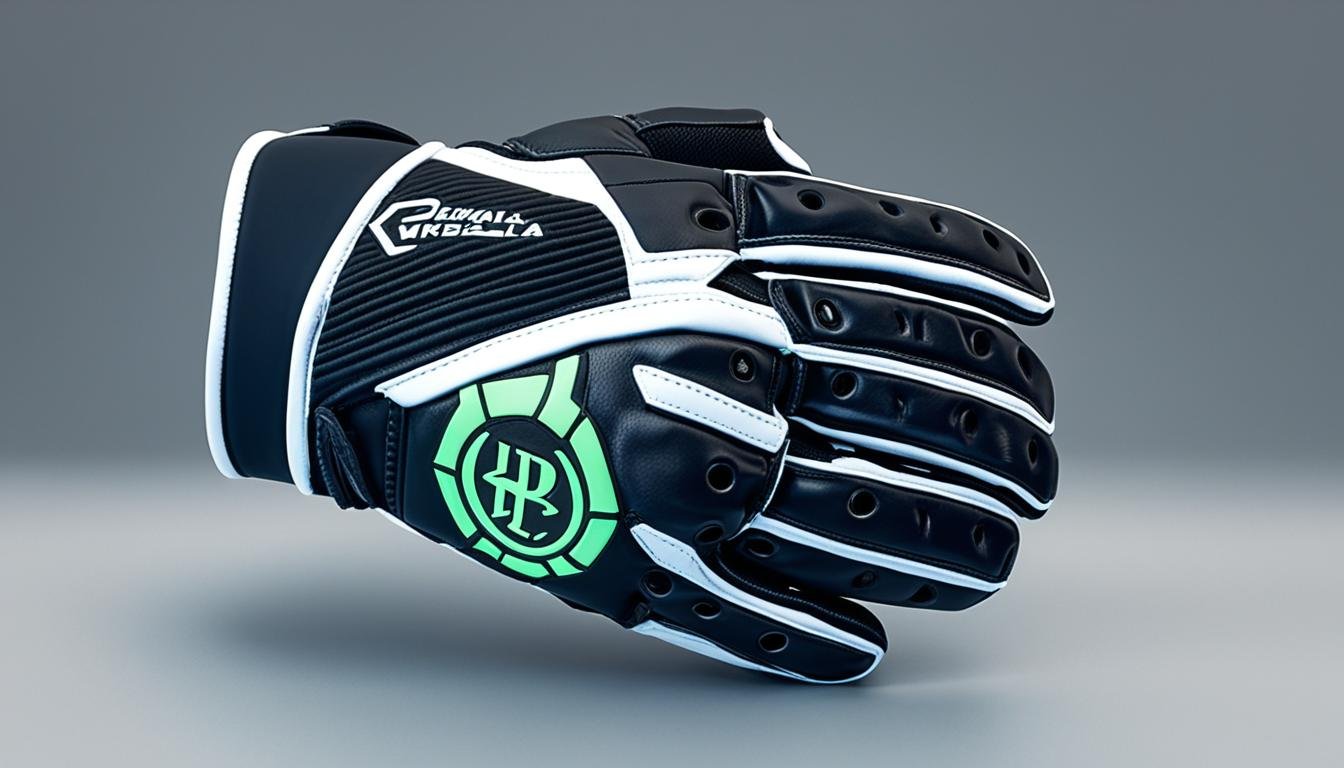

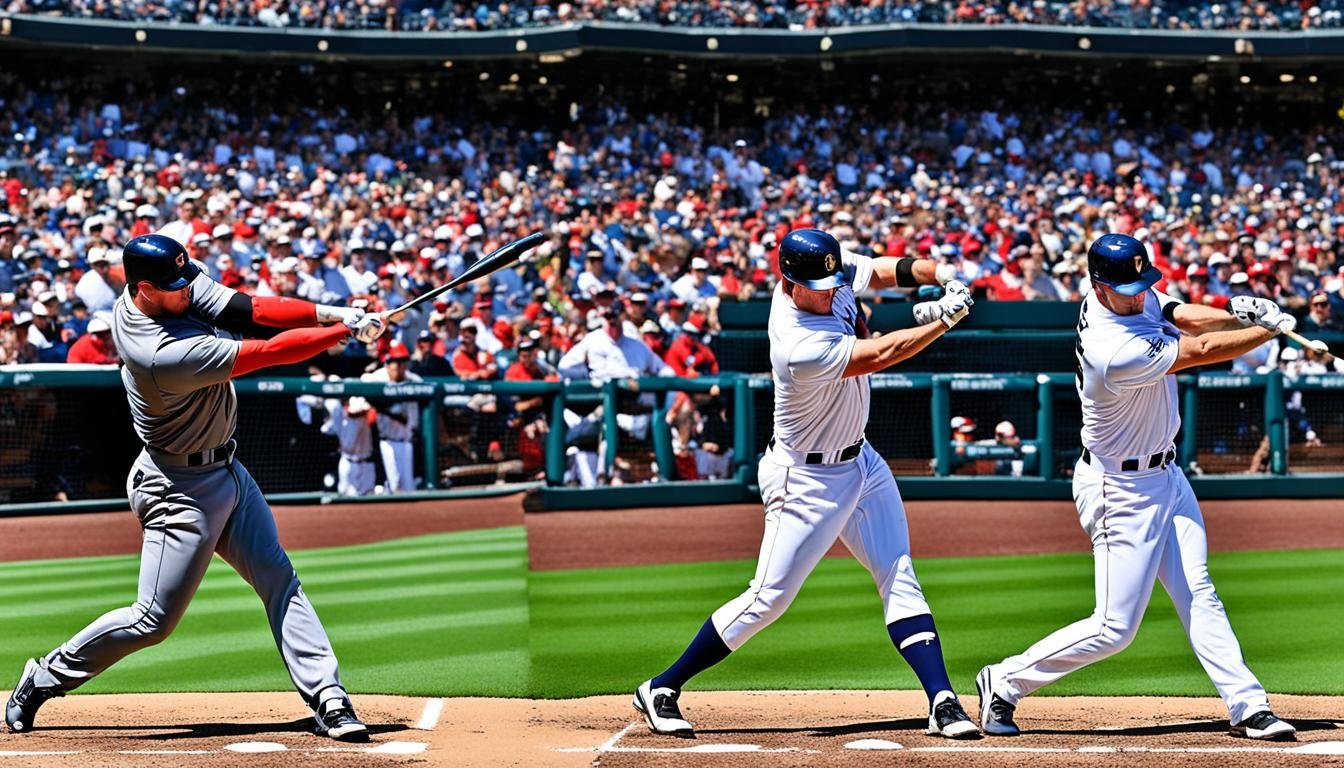
1 COMMENTS